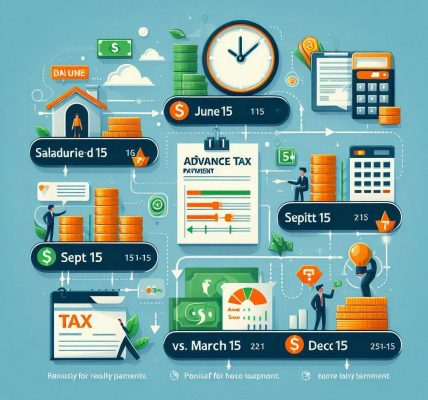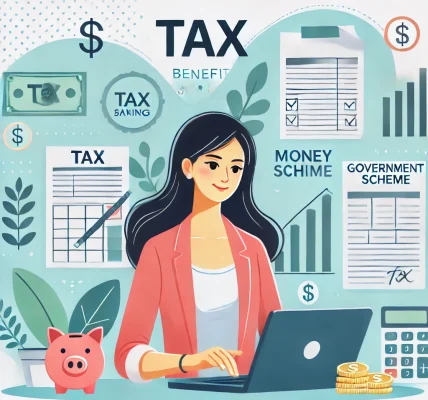Taxation is an essential part of personal finance, and managing it wisely can help you avoid penalties and manage cash flow better. One of the key concepts that many taxpayers are often confused about is Advance Tax.
In this blog, we’ll walk you through everything you need to know about advance tax: what it is, who needs to pay it, and how to make sure you’re complying with tax laws while optimizing your finances.
What Is Advance Tax?
Advance tax is the tax that is paid in advance, rather than waiting for the end of the financial year. It is based on the income you expect to earn in the current year, and the payments are made in installments throughout the year. Essentially, advance tax helps spread the tax burden and prevents taxpayers from facing a lump sum tax liability at the end of the year.
This system is also called pay-as-you-earn tax, as it ensures that you pay taxes regularly as you earn, rather than accumulating dues that need to be paid all at once. Advance tax is applicable to both individuals and businesses who have a tax liability above a certain threshold.
Who Needs to Pay Advance Tax?
Not everyone is required to pay advance tax. However, if you fall into any of the following categories, it’s important to understand whether or not you need to make these payments.
1. Individuals Earning a Significant Income
If you are an individual taxpayer and your total tax liability (after adjusting for TDS, or Tax Deducted at Source) exceeds ₹10,000 in a financial year, you are required to pay advance tax. This applies to salaried individuals as well, especially those with additional income sources such as freelance work, rental income, interest income, or business income.
2. Freelancers and Self-Employed Individuals
Freelancers, consultants, and self-employed individuals who are not subject to TDS (Tax Deducted at Source) need to pay advance tax if their income exceeds ₹10,000 in a financial year. Since no tax is deducted at source for self-employed individuals, they must estimate their income and make quarterly advance tax payments to avoid penalties.
3. Business Owners and Entrepreneurs
Businesses—whether they are small, medium, or large—need to pay advance tax if their estimated tax liability exceeds ₹10,000 in a financial year. Business owners should ensure they calculate their expected profit, taking into account all income sources, so they can estimate their advance tax payments accurately. Advance tax is particularly important for businesses with fluctuating incomes, as it helps to keep the tax liabilities spread out over the year.
4. Salaried Employees with Additional Income
Salaried individuals who have additional income (other than their salary) and whose total tax liability exceeds ₹10,000 after considering TDS must pay advance tax. The additional income could come from sources like:
- Interest income: From savings accounts, fixed deposits, or bonds.
- Rental income: Earnings from leasing property.
- Capital gains: Income from the sale of shares, mutual funds, or property.
In such cases, the tax that has not been deducted at the source must be paid through advance tax installments.
How Is Advance Tax Calculated?
The calculation of advance tax is based on your estimated income for the financial year. You need to estimate your total income, and then determine the tax due. Here’s a simple breakdown:
- Estimate your annual income: Consider all income sources like salary, business income, rental income, dividends, capital gains, etc.
- Calculate your taxable income: Subtract applicable deductions (under Section 80C, 80D, etc.) from your gross income.
- Determine your tax liability: Refer to the income tax slabs for the current financial year to calculate your tax liability.
- Subtract TDS: If tax has already been deducted at source from your salary, interest, or other incomes, subtract that from your total tax liability.
- Divide the tax liability into installments: The advance tax payment is divided into four installments throughout the year based on your estimated income.
When Should Advance Tax Be Paid?
Advance tax is paid in four installments during the year:
- 1st Installment: By June 15 – 15% of the estimated tax liability
- 2nd Installment: By September 15 – 45% of the estimated tax liability (after the first installment)
- 3rd Installment: By December 15 – 75% of the estimated tax liability (after the first two installments)
- 4th Installment: By March 15 – 100% of the estimated tax liability (after the first three installments)
Note that these due dates may vary slightly based on government regulations, so it’s important to stay updated each year.
How to Pay Advance Tax?
Advance tax can be paid online through the Income Tax Department’s e-filing portal or via designated banks. The payment process is simple:
- Log in to the Income Tax e-filing portal.
- Select the option for Advance Tax payment.
- Fill in the required details like PAN, assessment year, and payment mode.
- Choose the tax category (income tax or other categories).
- Pay using net banking or debit/credit cards.
Once the payment is made, the bank will issue a receipt, and the details will be updated in the income tax records.
Penalties for Not Paying Advance Tax
If you fail to pay advance tax or pay less than the required amount, you may face penalties and interest under Section 234A, 234B, and 234C. The penalties can include:
- Interest on late payments: If you miss any installments or delay payments, interest is levied.
- Penalty for underpayment: If you have paid less than the required amount, you might be charged with a penalty.
Thus, it’s important to ensure that you make your advance tax payments on time to avoid unnecessary financial penalties.
Conclusion
Advance tax is an essential part of financial planning for anyone earning significant income outside of salaried employment. By paying your taxes in advance, you can avoid penalties, manage cash flow, and contribute to your financial well-being.




